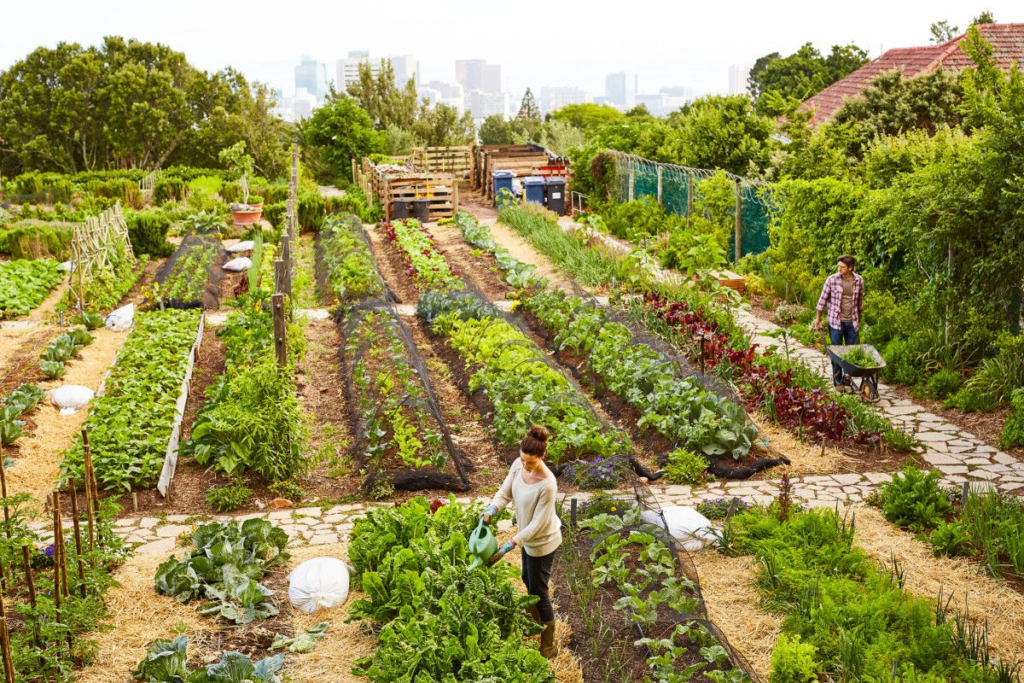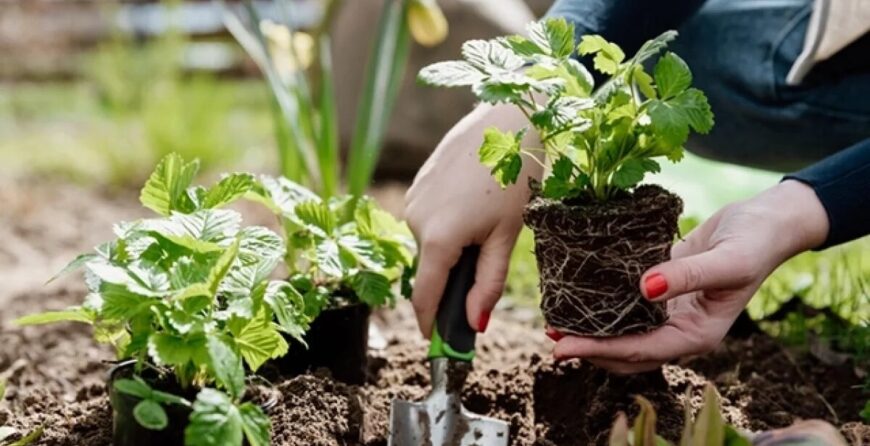Many gardeners are familiar with the term “companion planting”—an approach to vegetable gardening where plants are strategically planted together to enhance growth, boost yields, and deter pests. This ancient technique has stood the test of time because it works, providing both novice and experienced gardeners with a sustainable, eco-friendly way to grow a diverse range of plants for a vegetable garden in your Minnesota Food Forest.
What is Companion Planting?
At its core, companion planting involves pairing plants that work well together in the garden, either by supporting each other’s growth or by providing natural pest control. This method not only helps to increase the productivity of your garden but also minimizes the need for synthetic chemicals, reducing your environmental impact and fostering a more resilient garden ecosystem.
How Does Companion Planting Work?

There are several mechanisms behind the success of companion planting. Let’s break down a few of the primary ways it functions.
- Pest Control: One of the most well-known benefits of companion planting is pest control. Certain plants, especially those with strong scents, act as natural repellents for insects. For instance, aromatic herbs like lavender, mint, basil, and rosemary are known to repel unwanted pests, including aphids, mosquitoes, and flea beetles. These plants can be used to surround more vulnerable crops like fruit trees, berry bushes, tomatoes or cabbage, creating a natural barrier to pests.
Another pest-control strategy involves attracting beneficial insects. While the idea of welcoming more bugs into your garden might sound a bit intimidating, many of these insects are beneficial to the health of your plants. Predatory insects, such as ladybugs and parasitoid wasps, are essential for controlling pest populations. Parasitoid wasps, for example, lay their eggs on the larvae of pests like caterpillars and aphids, essentially using the pest population as a food source for their offspring. These tiny wasps are harmless to humans and will not sting, making them a safe and effective way to reduce pest populations.
Additionally, by planting a diverse range of flowers, you can attract a variety of pollinators such as bees, butterflies, and hoverflies. These insects help increase yields by ensuring the proper pollination of flowers, particularly those of fruit and vegetable plants. Pollinators play a crucial role in creating a balanced and thriving ecosystem in your Minnesota vegetable garden. - Soil Fertility: Another key benefit of companion planting is improving soil fertility. Plants in the legume family, including beans, peas, and clover, are known as nitrogen-fixing plants. This means they have a special ability to take nitrogen from the air and convert it into a form that plants can use. Through a process called nitrogen fixation, these plants create a natural fertilizer that benefits nearby plants. By incorporating legumes into your garden, you can reduce the need for synthetic fertilizers, which helps to maintain a healthy soil structure.
Legumes form symbiotic relationships with nitrogen-fixing bacteria in their root systems, allowing them to convert atmospheric nitrogen into a form that other plants can absorb. Planting beans alongside nitrogen-hungry crops like corn or tomatoes can provide a continuous supply of nutrients to these heavy feeders, resulting in healthier, more productive plants. A Minnesota vegetable garden is not complete without nitrogen fixing plants. - Structural Support: Companion planting can also provide structural support for plants with different growth habits. Tall plants like corn or sunflowers can act as natural trellises for climbing plants such as beans, cucumbers, or peas. The vertical growth of corn or sunflowers offers support for these climbers, keeping them off the ground and allowing them to grow more efficiently. This type of plant pairing maximizes space and allows you to grow a larger variety of crops in a smaller area.
Additionally, root crops such as carrots, beets, and radishes can help break up compacted soil and loosen it, making it easier for the roots of other plants to spread and access nutrients. This allows for better root development and overall plant health for your Minnesota vegetable garden. - Optimizing Space: Companion planting can also be a great way to maximize your available space. By carefully selecting plants that have complementary growth habits, you can fit more plants into your garden without them competing for resources. For example, planting low-growing herbs or lettuce alongside taller crops like tomatoes or peppers can allow you to use all available space efficiently. By using plants with different heights, root depths, and growth habits, you can create a layered, multi-dimensional garden that maximizes both space and yield.
Choosing Companion Plants for Your Minnesota Vegetable Garden

When implementing companion planting strategies in your Minnesota vegetable garden, it’s important to keep in mind your region’s specific growing conditions, particularly in colder climates like Minnesota. The short growing season and the risk of frost require careful planning and selection of plants that will thrive in these conditions.
Start by choosing a specific plant in your garden and then research its common pests, diseases, and growth habits. For example, if you are growing an apple tree, common pests may include apple maggot, codling moth, and aphids. You can then find companion plants that will deter these pests or attract their natural predators. Planting flowers like lavender or nasturtiums near your apple tree will repel aphids, while planting dill or fennel will attract parasitic wasps that feed on codling moth larvae.
When selecting companion plants, always consider factors such as soil type, water requirements, and sunlight exposure. Some plants may require full sun, while others prefer partial shade. Be sure that the plants you pair together have similar needs, so they will all thrive in the same environment. Additionally, consider the mature size of the plants. A sprawling vine might shade out a smaller plant, or a tall plant might block the sunlight from reaching shorter crops.
Examples of Effective Companion Planting Combinations
Here are a few tried-and-true companion planting combinations for Minnesota gardeners:
- Tomatoes and Basil: Tomatoes and basil are classic companions. Basil is known to improve the flavor of tomatoes and can also repel pests like aphids and mosquitoes. Planting basil alongside tomatoes will not only help with pest control but will also provide an aromatic herb that’s perfect for cooking.
- Corn, Beans, and Squash (The Three Sisters): This traditional Native American planting technique pairs corn, beans, and squash together in a mutually beneficial arrangement. Corn provides tall stalks for beans to climb, beans fix nitrogen in the soil, and squash spreads along the ground, providing shade to prevent weeds and conserving soil moisture. This combination is an excellent choice for Minnesota foodscapers looking to grow a variety of crops in a small space.
- Carrots and Onions: Carrots and onions make great companions, as the strong odor of onions helps repel carrot flies, which are notorious for damaging carrot crops. In return, the carrots help to loosen the soil, making it easier for the onions to grow. This combination works well in Minnesota’s cool climate.
- Radishes and Spinach: Radishes and spinach are a great combination for early spring planting in Minnesota. Radishes mature quickly, so they can be harvested before spinach becomes too large and crowded. Additionally, radishes help to break up compacted soil, improving the growing conditions for spinach.
Tips for Successful Companion Planting
- Embrace Diversity: The key to successful companion planting is diversity. Rather than planting rows of a single crop, try to create a diverse foodscape filled with a variety of plants that can work together to enhance each other’s growth. This not only promotes plant health but also helps attract beneficial insects and encourages biodiversity in your Minnesota vegetable garden.
- Observe and Adjust: Gardening is a dynamic process, so be sure to observe how your plants interact with each other and adjust your strategies as needed. If you notice that certain plant pairings are not thriving, experiment with different combinations or try adding additional plants to attract more beneficial insects.
Final Thoughts
Companion planting is a sustainable and effective gardening practice that can help boost yields, control pests, and improve the overall health of your garden. Whether you’re growing annuals or perennials, experimenting with different plant combinations is a fun and rewarding way to create a vibrant, thriving food forest in Minnesota. By considering the needs of your plants and embracing diversity, you can create a resilient ecosystem that benefits both your garden and the environment.
Happy gardening!



